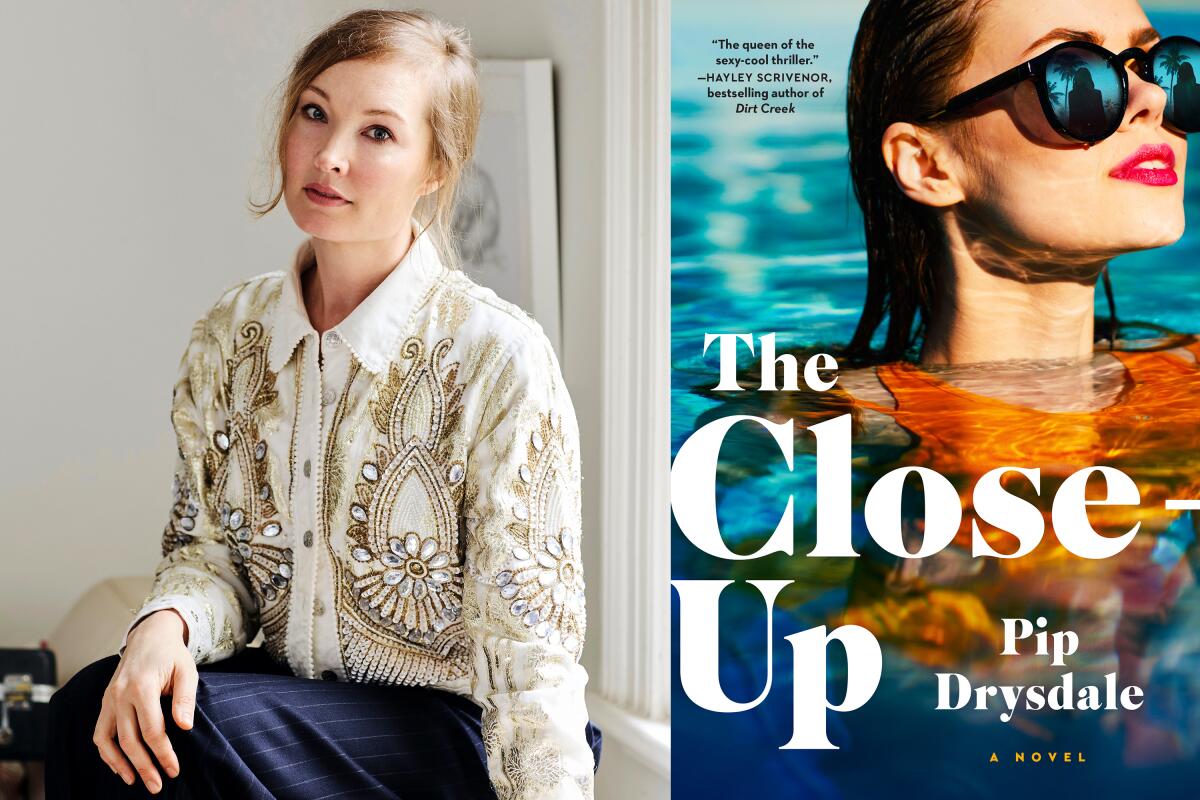Dying to Know
4 mystery writers answer burning questions
If you buy books linked on our site, The Times may earn a commission from Bookshop.org, whose fees support independent bookstores.
Ring out the old year and bring in the new with four outstanding mysteries and discover each author’s lists of surefire, gift-worthy books.
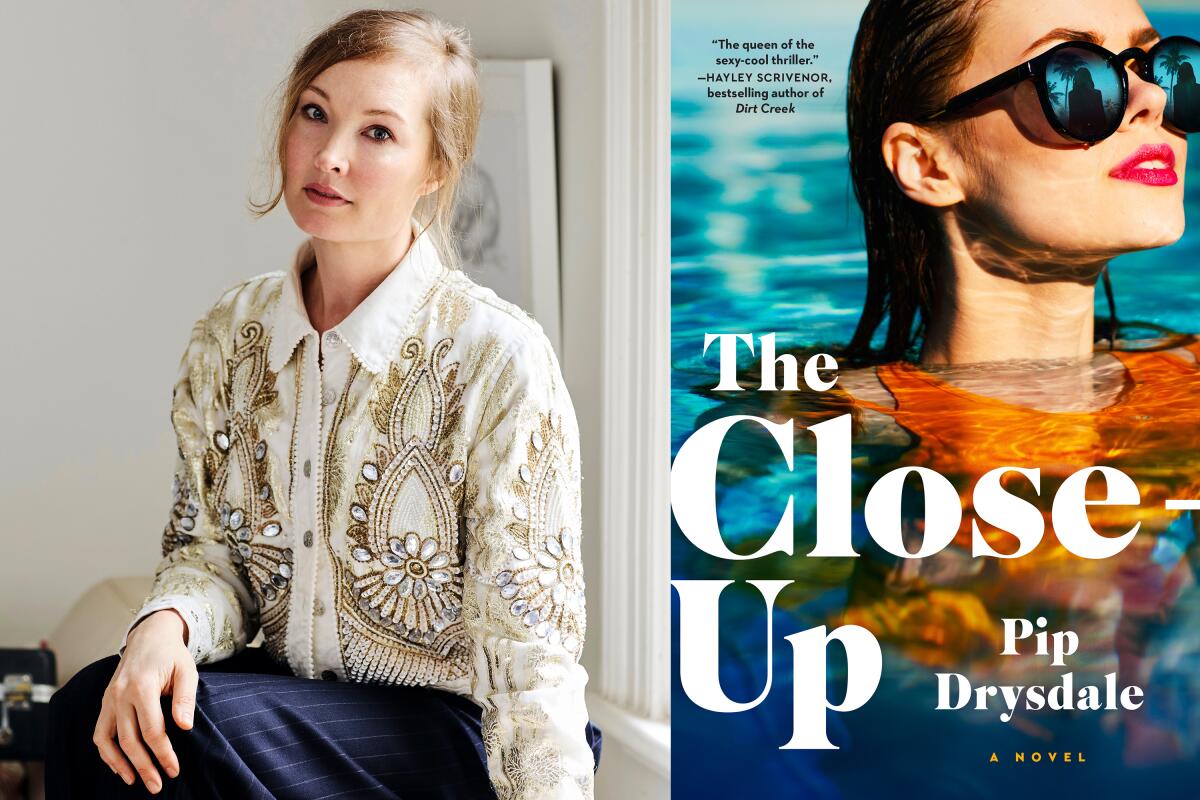
Pip Drysdale, author of “The Close-Up.”
(Katie Kaars / Gallery Books)
The Close-Up
By Pip Drysdale
Gallery Books: 352 pages; $29
Out now
Sydney-based Pip Drysdale nails novelists, actors and other fame-hungry strivers perfectly in this dark thriller, her fifth, centered on a young author desperate for a second bite of the apple. Londoner Zoe Ann Weiss has spent the advance from her first failed thriller — about a woman being stalked by a virtual stranger — and is now working at a Venice florist shop to make ends meet while she dodges emails from her agent and struggles to write that second book in order to avoid repaying a $250,000 advance. On her 30th birthday, she is delivering flowers for a Hollywood talent manager’s party when she unexpectedly runs into blue-eyed charmer Zach Hamilton, a former bartender-actor and fling from three years before. Now People magazine’s Sexiest Man Alive, Zach is still humble enough to recognize Zoe and cop to his bad behavior in ghosting her. He convinces her to drive him to a party, where he promises to connect her with a producer friend, but not before signing a nondisclosure agreement sent en route by Zach’s manager, standard procedure for the scandal-averse breakout star of the first entry of a planned action trilogy. Soon, Zoe’s breathing the rare air of L.A. dreamers — with their “designer jeans, stilettos and injectables” — and Zach’s familiar musk and earth scent, experienced up close during an after-party skinny dip and more at his Hollywood Hills home. Though painfully aware of how far her reality is from his, Zoe thrills to secretly dating Zach, stirring old feelings and an insidious idea: why not base her next thriller on Zach and his world, NDA be damned? When aerial photos are leaked of the couple in Zach’s pool and a stalker takes aim at Zoe, re-creating creepy scenes from her first novel, her idea has a plot that presents both legal and romantic dilemmas. References to F. Scott Fitzgerald’s “The Great Gatsby,” Joan Didion’s “Play It as It Lays” and other classics lend literary resonance to Drysdale’s warped tale of fame and revenge that manages to deliver some real surprises as it answers the question posed by Zoe’s stalker: “R U willing to die for him?”
What parts of Zoe Ann Weiss resonated most deeply for you?
Zoe and I both experienced failure and had to come back from it. We’ve both experienced writer’s block, staring at the blank page, and have both read and reread the classics in case we learn tricks via osmosis. And, unfortunately, we’ve both had stalkers. In writing “The Close-Up,” I especially wanted to follow a character’s emotional journey through being a victim of stalking in a way that felt true to me — with all the illogical choices, feelings and thoughts one might not expect but which are nonetheless true.
You write with a gimlet-eyed love of L.A. locations. Given you were writing from a distance, how did you capture L.A. so faithfully?
I love L.A.! Spending time with people who live there over the years, I picked up this sense of hope in the air that clung to me, that told me dreams could come true in L.A. That energy got me halfway through the first draft of this book. But then I took a research trip specifically for “The Close-Up” that allowed me to gather more specific sensory information. I walked Zoe’s route to her local grocery store (and saw the fabled Chateau Marmont right there, taunting her). And wandered around in the alleyway behind her florist job in Venice.
What books are you giving this holiday season?
I have two: “Red River Road” by Anna Downes, a twisty and unexpected missing-sister thriller set in the Australian outback. The other is “When Cicadas Cry” by Caroline Cleveland. I loved the Southern Gothic vibe in this legal whodunit set in a small community outside Charleston, S.C.
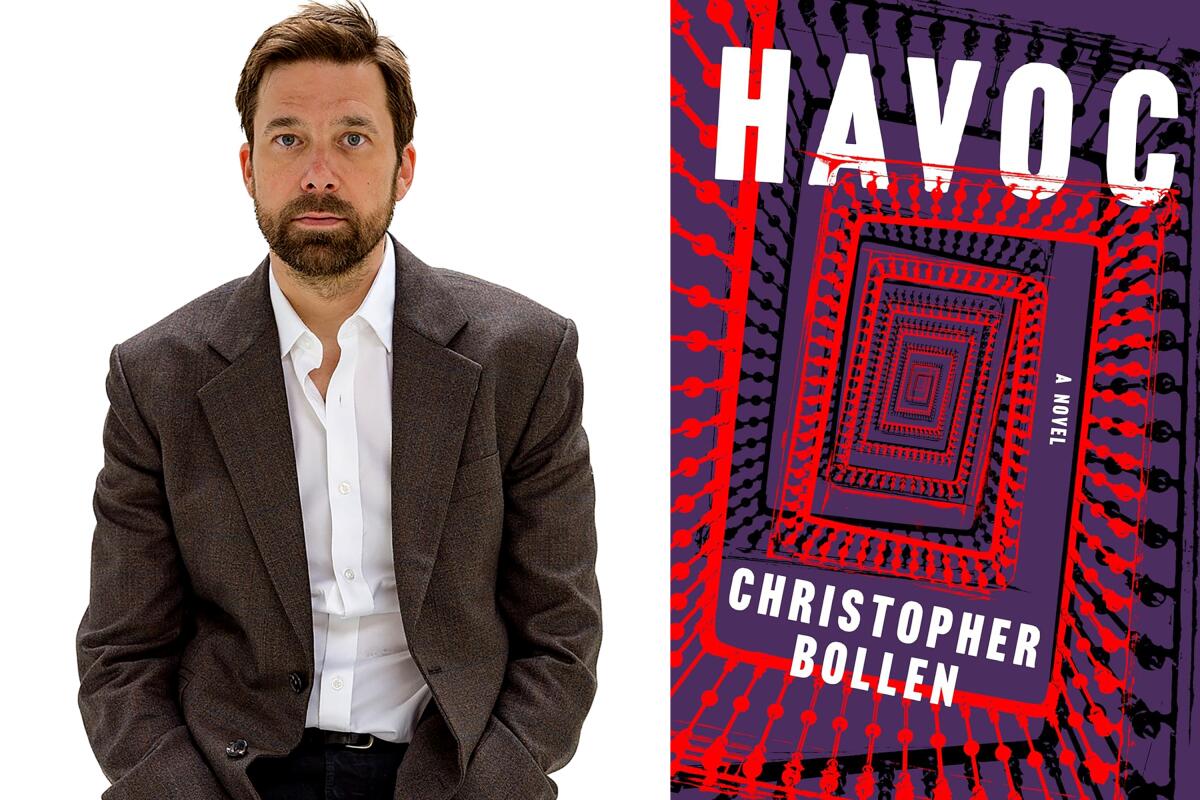
Christopher Bollen, author of “Havoc.”
(Jack Pierson / Harper)
Havoc
By Christopher Bollen
Harper: 256 pages, $30
Out now
In Christopher Bollen’s accomplished sixth novel, Maggie Burkhardt is an 81-year-old widow whose peripatetic travels to Europe’s grand hotels come to an abrupt end when COVID sidelines her in Egypt at Luxor’s less-than-regal Royal Karnak Palace Hotel. As she gossips poolside with a gay couple, one of whom is an Egyptologist studying the museum’s ancient artifacts, and insinuates herself into the hotel’s daily rituals, there are hints that Maggie is not as nice, nor as well-intentioned, as her first-person patter would suggest. Meddling in the affairs of a married couple she decides need to be broken up — part of her mission to “change people’s lives for the better” — Maggie’s caught outside their room after planting incriminating evidence of the husband’s nonexistent affair by Otto, a precocious 8-year-old who’s mysteriously arrived at the hotel from Paris with his mother. When Otto boldly blackmails Maggie into paying for a room upgrade in exchange for his silence, it’s not just a matter of game recognizing game. Soon the two are involved in a tit-for-tat escalation that has dire consequences for everyone in their orbit and reveals Otto as Maggie’s formidable “Bad Seed” foe. Using the sultry Egyptian climate and locales to great effect, L.A. Times Book Prize nominee Bollen (for “A Beautiful Crime”) has pulled out all the stops in delivering a sinister thriller with resonances to classic literature such as Henry James’ “Turn of the Screw,” Helene Tursten’s “An Elderly Lady” series or the best of Patricia Highsmith.
How did you create Maggie Burkhardt?
I slipped into the shoes of a maniacal 81-year-old widow so effortlessly it was almost frightening. I just managed to get the voice of Maggie down from the start. We hear so often, “write what you know,” but it was actually diving into a character who was, on the surface, so unlike me that really gave me a sense of freedom to explore.
Some of my favorites among your novels are those set in foreign countries. What’s the appeal of foreign versus U.S. settings, and why Egypt for “Havoc”?
Since I love to travel, I fall in love with locations, and they seem to burst with opportunities for interesting plots. I didn’t intend to revisit Egypt, but before I set sail up the Nile in April 2021, I stayed at an old grand hotel in Luxor and Maggie’s story just jumped out of me — and went for the throat.
What books are you giving this holiday season?
I’m giving myself the Javier Marías novel “The Infatuations,” since I’ve never read the late, great Spanish literary crime writer. For friends, I’m giving Lucy Foley’s “The Midnight Feast” and I’m also giving pre-order gifts for Katy Hays’ upcoming thriller “Saltwater,” set on Capri.
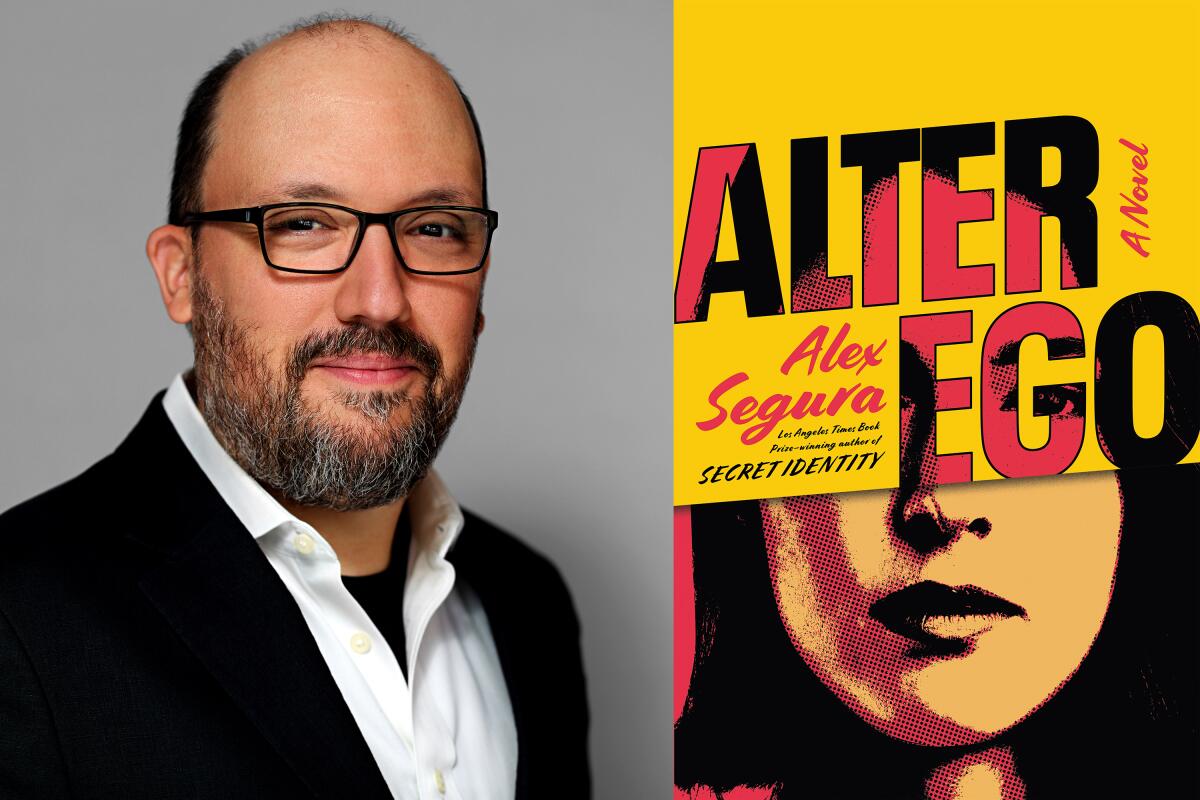
Alex Segura, author of “Alter Ego.”
(Irina Peschan / Flatiron)
Alter Ego
By Alex Segura
Flatiron Books: 320 pages, $29
Out now
Alex Segura brought all of his passion and knowledge of mystery and comic book writing to 2022’s “Secret Identity,” a fictional story set in the mid-1970s about a Cuban American finding her voice as both comic book artist and a queer woman. The L.A. Times Book Prize winner broke barriers by including panels from “The Legendary Lynx” series created by Carmen Valdez for Triumph Comics before her withdrawal from the industry after a murder and the theft of her intellectual property. Now, “Alter Ego” surpasses the achievements of “Secret Identity” by deepening the themes of artistic freedom and control and reclaiming women’s voices in comics. Annie Bustamante is a single mother and acclaimed filmmaker whose roots as a comic book artist include a childhood passion for fellow Cubana Valdez’s work. After a shelved movie project stalls her career, Annie is presented with an opportunity to use the secret cache of Lynx illustrations she’s been drawing (sprinkled throughout the novel) to reboot the almost-forgotten series. Her partners are a shady trio of collaborators — including the Triumph Comics’ heir, his shady business partner and an aging, #MeToo-exiled film director. The result is a deadly battle — Art versus Commerce — that threatens Annie’s life, her quest to find Carmen Valdez and reinvigorate her dynamic hero: “I wanted her to thrive and to remind the world why they needed someone like the Lynx,” Annie writes of the Lynx’s alter ego, Claudia Calla. “A woman who realized her power and potential and used it to help others like her. Especially these days — as our power, our own bodily autonomy, was being systematically stripped away and chipped at by those in power.”
Why did you frame the story around Annie Bustamante?
When I realized there was another story to tell in the universe established in “Secret Identity,” I knew I wanted it to be different — a companion piece more than a sequel. Both Carmen and Annie are presented with dream projects at different points in comic book history. Through Annie, I wanted to show how the comic book and entertainment industry have evolved over the intervening years, which then poses the question: How far will Annie go to protect the character that pulled her into comics, and then the person responsible for creating that story?
When Annie writes about her hopes for the Lynx’s alter ego, is she talking about Claudia Calla, Carmen Valdez or herself?
I think it’s relevant to all of them. In these times, where reproductive rights, LGBTQ rights and many of our freedoms are being threatened, it’s important to speak up and not sit idly by. I think for Annie, the quest to reclaim the Lynx and elevate Carmen’s legacy wove into those deeper feelings of rage and frustration, which fueled her journey to uncover the truth.
The Legendary Lynx artwork included in “Alter Ego,” is a beautiful extension of the mythic story begun in “Secret Identify.” It makes me wistful for a real Lynx comic book.
Well, there is a series now: “The Legendary Lynx,” just published by Mad Cave and featuring the art of Sandy Jarrell. Sandy is the artist behind the comic book sequences in “Secret Identity” and “Alter Ego” and is really the unsung hero of this saga. A true craftsman with a love for the medium and flexibility that’s truly unmatched in comics. He breathes life into Carmen and Annie’s ideas in ways I could only imagine.
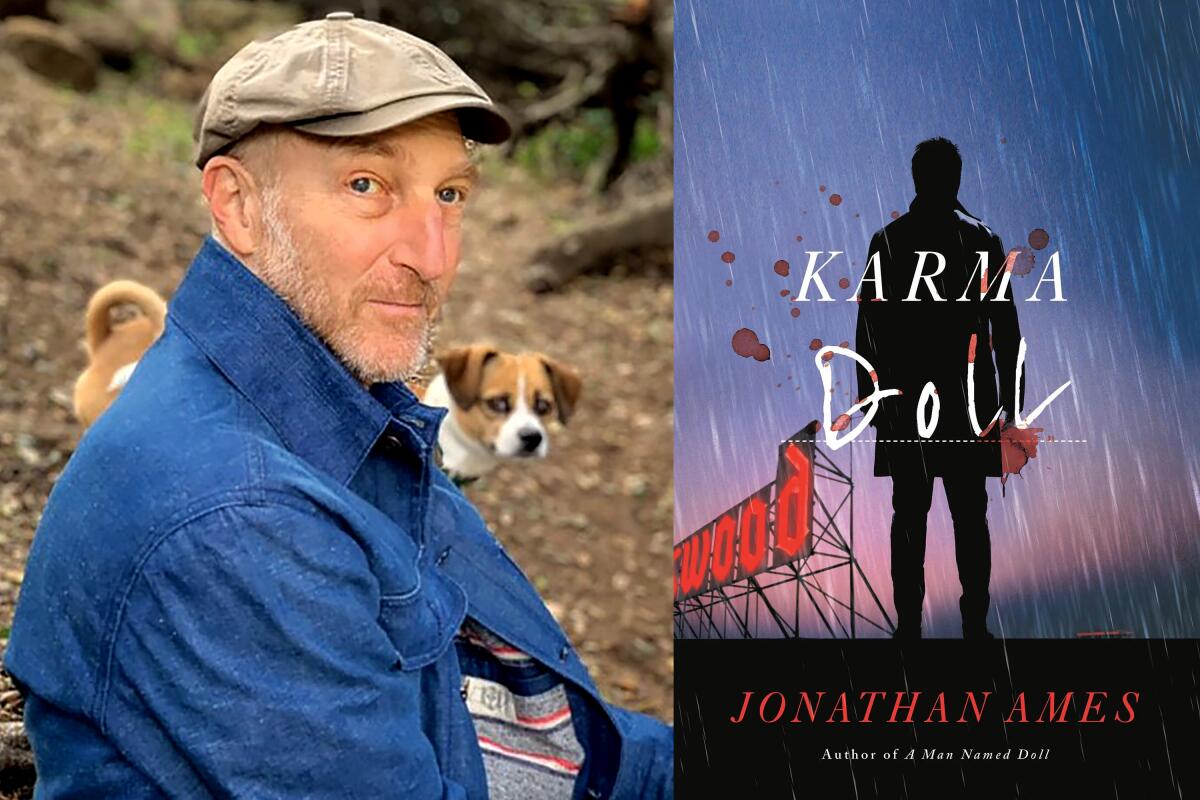
Jonathan Ames, author of “Karma Doll.”
(Mulholland Books)
Karma Doll
By Jonathan Ames
Mulholland Books: 240 pages, $27
Jan. 14
L.A.-based writer Jonathan Ames (novels and HBO’s excellent “Bored to Death”) has been delighting readers of California noir with the darkly comic, bloody adventures of ex-cop and PI Happy Doll since his debut in 2021’s “A Man Named Doll.” A 21st century reimagining of Raymond Chandler’s iconic Philip Marlowe, Doll pursues thugs, organ harvesters and other miscreants down the mean streets of Southern California and other points West “in search of a hidden truth,” as Chandler describes the Marlowe stories in “The Simple Art of Murder.” For Doll, that hidden truth is Buddhism, which he begins to study in “The Wheel of Doll”; by “Karma Doll,” which follows directly after, he’s applying the principles of karma to his own violent actions and trying to find an enlightened solution. The novel opens with Doll decamped to Mexico with George, his half-Chihuahua, half-terrier sidekick, to get his shoulder patched up and a new face at an illegal hospital after injuries suffered at the hands of a criminal he kills after stealing $60,000 in cash from a Jalisco drug cartel’s bagman. But trouble seems to follow the PI wherever he goes; in Mexico, it’s a drugged-out gangster patient who attacks the doctor and his nurses, and whom Doll kills, with great regret: “Diablo was the eighth man I had killed,” the investigator reflects later, “and it was always in self-defense, in situations in which I could have also been killed, but each time I had done it I had felt the sickening pull of the abyss, of becoming a shadow human impervious to the suffering of others.” Doll’s action unleashes a cascade of karmic consequences, most of them violent and some perpetrated by him, that culminate in the investigator being set up to take the fall for the killing of a young female tourist and being pursued by bounty hunters sent by that cartel bagman. Set on exacting retribution, Doll hightails it back to his home in Los Angeles to even the score with the real murderer and the cartel’s bagman, all while keeping nominally true to Buddhist principles. While the setup may seem a bit different for noir fiction, Ames’ expert plotting and spot-on descriptions of Mexican and stateside environs and denizens makes “Karma Doll” another excellent installment of what is, happily, proving to be a long-running series.
Were iconic Southern California PIs like Philip Marlowe and Lew Archer on your mind when you first started writing Happy Doll?
They weren’t directly on my mind, but both characters are deeply embedded in my literary muscle memory, as it were. I’ve happily read every Marlowe and Archer story there is, and, unconsciously, Doll may have some of Marlowe’s penchant for comedy and some of Archer’s love of nature (Ross MacDonald writes beautifully about the sea). I will say that Doll is not quite as accomplished as those two sleuths — he may have a touch of a hard-boiled Clouseau in him — but he does get the bad guy in the end.
Why was Doll’s deepening study of Buddhism and imperfect practice of the religion important?
As the series has progressed, Doll grapples ever more with the violence he has perpetrated in the pursuit of justice. He’s very disturbed by what he has done, and so he turns to Buddhism to understand his suffering and he comes to see that he is the main cause of his “bad karma.” He learns that he must take responsibility for his actions and change his behavior if he wants to lessen his suffering and the suffering he causes others. But he’s in a tough profession for this. As he says in the fourth Doll novel, which I’m currently writing: “Bad karma is my business model.”
What books are you giving as gifts this holiday season?
I always give Pema Chödrön’s books as gifts. She’s a Buddhist nun who writes with great clarity and wisdom about life, and I have found her books incredibly helpful over the years. Two of my favorites are “The Compassion Book: Teachings for Awakening the Heart,” which contain slogans with interpretations you can read every day, and “Living Beautifully: With Uncertainty and Change.”
A member of the National Book Critics Circle, Woods is the editor of several anthologies and author of four novels in the “Charlotte Justice” mystery series.
